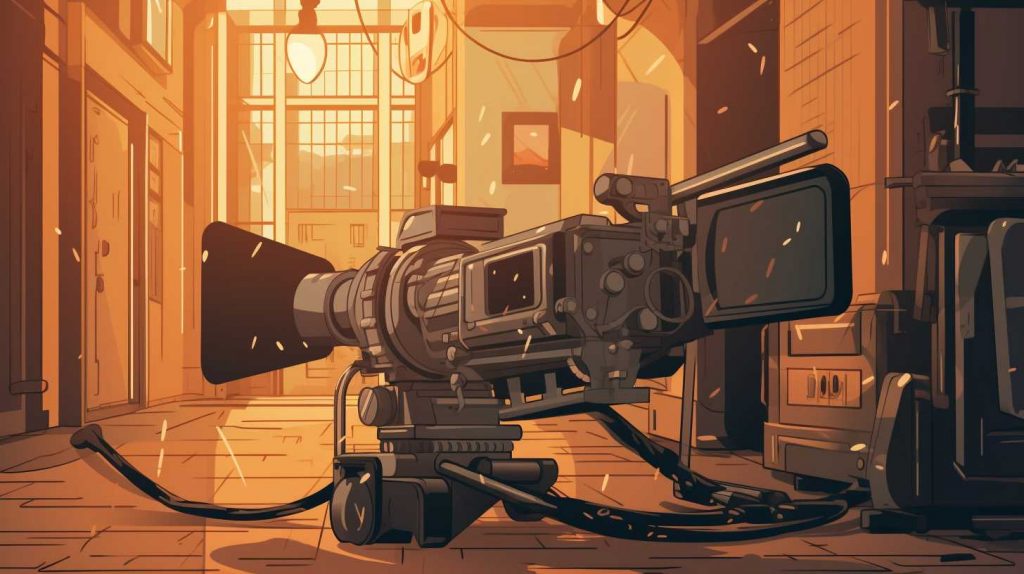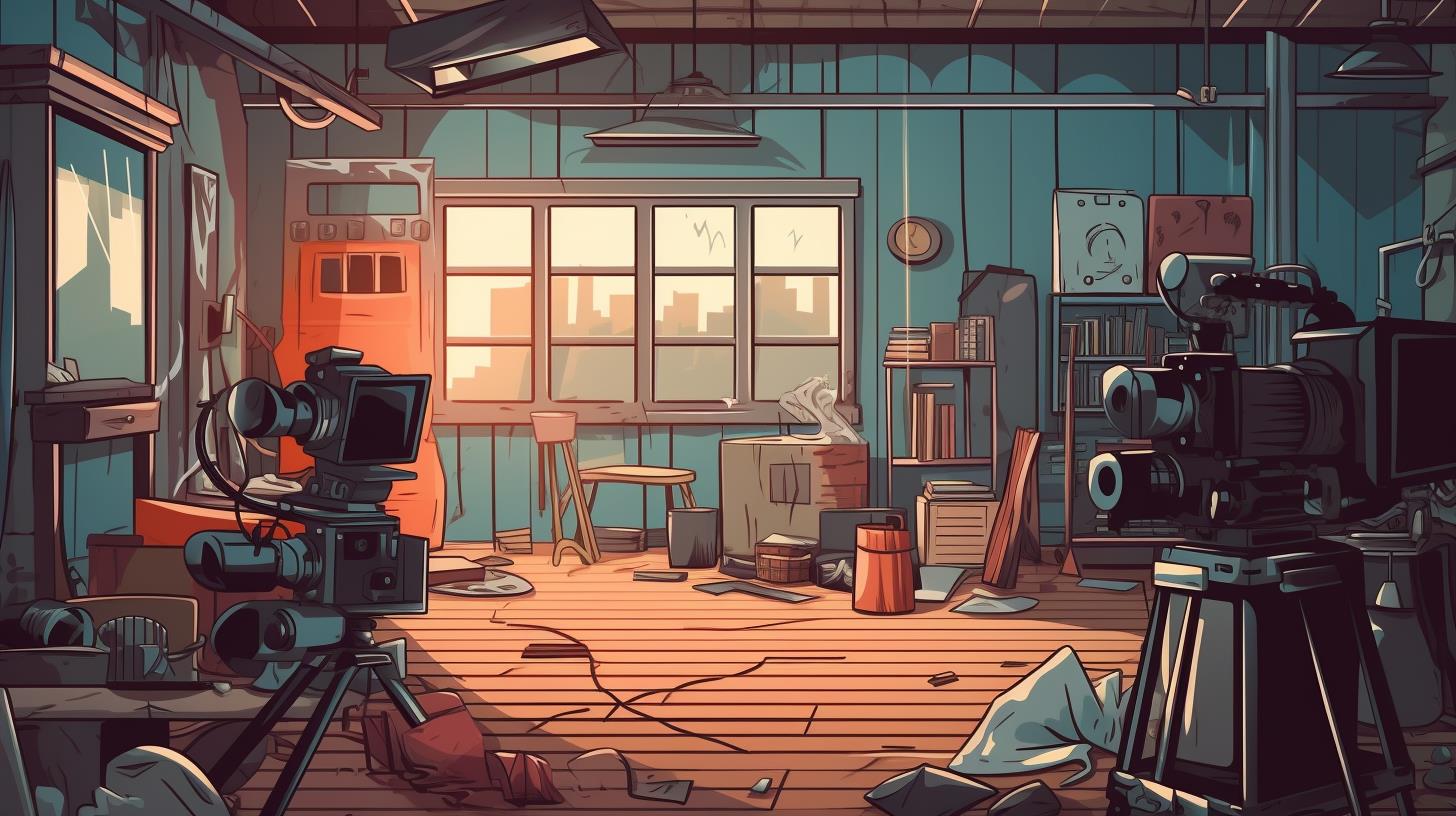Are you ready to embark on your filmmaking journey and create your very first movie? While it’s an exciting and fulfilling endeavor, you should be aware of the common mistakes that many first-time filmmakers make. By understanding what not to do, you can ensure that your movie turns out the way you envision it. In this short guide, we’ll explore the essential steps to make a movie, highlighting the pitfalls to avoid along the way.
Contents
Why Shoot Your First Movie?
The filmmaking industry has been evolving and adapting in countless ways. With so many technological advancements (just think of CGI or virtual film prodiction), we’re living in an exciting time, a time when anyone with a story to tell and a camera to capture it can make a film.
You’ve probably been creating short videos for social media, honing your skills, and learning the ropes. You’ve been telling stories in bite-sized pieces, mastering the art of capturing an audience’s attention in mere minutes or even seconds. You probably tried a short film (see what it takes to make a good one).
Now, imagine taking that skill, that passion, and expanding it. Imagine creating not just a short video, but a full-length film. It’s a big step, I know. But it’s a step that’s entirely within your reach.
Without any further ado, we’re going to explore how you can transition from creating short social video content to producing your own film. We will highlight the errors to avoid alongside our tips and advice for each stage in the filmmaking process.
Remember, every great filmmaker started somewhere. You’re standing at the start of an incredible journey. It’s time to take that next step. Let’s dive in.
Development of the Film: Finding Your Story

Every great movie starts with a compelling story. One of the biggest mistakes aspiring filmmakers make is neglecting the importance of a well-developed idea or screenplay. Before diving into the filmmaking process, take the time to find your story. This can involve writing your own screenplay or partnering with a screenwriter to bring your idea to life. You can also explore existing scripts that align with your vision. Here is a list of free movie script websites for you to get started.
Writing a screenplay requires careful consideration of visual ideas, character development, and story arcs. Ensure that your script has a clear structure and engages the audience from start to finish. Avoid relying on clichéd twists and aim for a story that is interesting throughout. Remember, simplicity is key – if you can’t describe your idea in a concise manner, it may need further refinement.
Mistakes to Avoid: Neglecting Story Development
One common mistake is underestimating the importance of a well-developed story. Don’t rush into production without thoroughly planning and refining your script. Take the time to ensure that your story is compelling, engaging, and easily understandable.
Another mistake is not doing enough research about the subject matter, which can lead to inaccuracies or clichés in the story.
Getting the Essential Equipment: Cameras, Sound, and Editing Programs

Once you have your story in place, it’s time to gather the necessary equipment for your movie. The camera you choose will play a significant role in the visual quality of your film. Options range from using your smartphone, which can produce excellent results, to dedicated camcorders or mirrorless cameras like the Panasonic G85 or Fujifilm X-T3 for more creative potential. Consider your budget and desired aesthetic when selecting a camera.
Sound is another important aspect of filmmaking. Invest in a good microphone to ensure clear and high-quality audio. External audio recorders can help capture better sound, and don’t forget to pay attention to ambient noise during filming. Also, consider using a tripod or stabilizer to keep your shots steady.
When it comes to editing your movie, choose an editing program or app that suits your needs. Popular options include Adobe Rush for beginners, while Final Cut Pro X and Adobe Premiere Pro offer more advanced features. Hollywood studios use the same editing software, by the way. Select a program that you are comfortable with and that allows you to bring your creative vision to life.
Mistake to Avoid: Neglecting Sound and Camera Stability
One mistake that can significantly impact the quality of your movie is overlooking sound and camera stability. Poor audio can ruin an otherwise visually stunning film, so invest in proper sound equipment and be mindful of ambient noise. Also, make sure that your shots are steady by using a tripod or stabilizer to prevent shaky footage.
Pre-Production: Planning and Organization

Pre-production is that stage that involves careful planning and organization before you begin filming. Start by breaking down your script into individual scenes and determining the specific requirements for each scene. This process will help you create a shooting schedule and identify the equipment and resources needed for each shot.
Consider the visual aspects of your film, such as the desired aesthetic and shot composition. Storyboards are a valuable tool for visualizing your shots and ensuring that everyone involved in the production understands your vision. Create shot lists to keep track of the shots you need and any specific requirements for each scene.
Mistakes to Avoid: Poor Planning and Lack of Organization
One of the most significant mistakes in pre-production is poor planning and a lack of organization. Without a clear plan, you risk running into logistical issues and wasting valuable time and resources. Take the time to create a detailed shooting schedule, shot lists, and storyboards to guide your production process.
Filming: Capturing the Scenes

With pre-production in place, it’s time to start filming your movie. Whether you’re working alone or with a team, effective communication and coordination are essential. Ensure that your actors are well-prepared and understand their roles, and work together to block and rehearse each scene.
During filming, take multiple takes of each shot to give yourself options during the editing process. Consider different angles and compositions to capture the best visuals. Don’t forget to review your shots on location to ensure that everything is captured correctly.
Mistakes to Avoid: Lack of Preparation and Insufficient Takes
One common mistake during filming is a lack of preparation and insufficient takes. Ensure that your actors are well-rehearsed and comfortable with their roles. Take multiple takes of each shot to ensure that you have enough footage to work with during the editing process.
Don’t ignore the importance of communication either. Miscommunication can lead to errors on set. Also, avoid being inflexible. Unexpected issues will arise, and you need to be able to adapt quickly.
Post-Production: Editing and Polishing Your Movie

Post-production is where your movie truly comes together. Start by organizing your footage and reviewing all the shots you captured. Create a rough cut by selecting the best takes and arranging them in the desired order. Pay attention to the flow and pacing of your film, ensuring that it keeps the audience engaged.
Once you have a rough cut, it’s time to refine your movie further. Add sound effects, music, and any necessary visual effects to enhance the overall viewing experience. Pay attention to color grading to establish the desired mood and tone. Finally, review and fine-tune your edit, making sure that it aligns with your original vision.
Mistakes to Avoid: Rushing the Editing Process
One common mistake in post-production is rushing the editing process. Take the time to carefully review and refine your edit, paying attention to details such as sound effects, music, and visual effects. Rushing through this stage can result in a subpar final product.
It’s easy to get eager to release the film and not give the edit the time it needs. Also, don’t ignore sound design. Good sound is just as important as good visuals.
Marketing and Distribution: Sharing Your Movie

Congratulations, your movie is complete! Now it’s time to share it with the world. Consider creating a movie website or social media channels to promote your film. Submit your movie to film festivals to gain exposure and potentially secure distribution opportunities. If you’re looking to monetize your movie, explore options such as online streaming platforms or self-distribution.
Mistakes to Avoid: Neglecting Promotion and Distribution
One mistake many filmmakers make is neglecting the promotion and distribution of their movie. Take advantage of online platforms and social media to reach a wider audience. Submit your film to festivals and explore distribution opportunities to maximize its reach. TFestivals can provide valuable exposure and networking opportunities.
Don’t limit yourself to one platform. Explore multiple distribution channels to reach a wider audience.
Conclusion
By understanding the common mistakes to avoid when making your first movie, you can set yourself up for success. Remember to focus on developing a compelling story, investing in the right equipment, planning and organizing your production, capturing quality footage, and taking the time to polish your movie during post-production. With careful attention to these essential steps, you’ll be well on your way to creating a memorable and impactful film. So go forth, learn from the mistakes of others, and bring your unique vision to life on the big screen!
Additional Information: Short videos have become increasingly popular in recent years, with platforms like TikTok and Instagram Reels dominating the social media landscape. As a new filmmaker, you can leverage this trend by incorporating short-video creation into your filmmaking process. Consider creating behind-the-scenes clips, teasers, or snippets of your movie to generate excitement and engage with your audience. Embrace the power of short videos to complement your traditional filmmaking journey.
